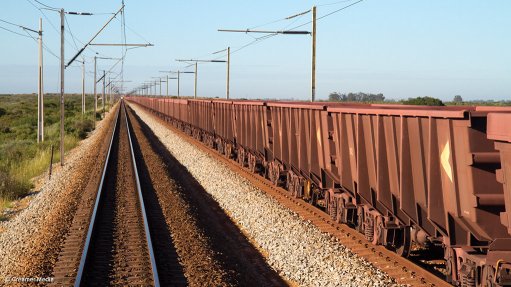Plans in place despite setbacks


DECARBONISATION PLANS The Future Sasol strategy outlines concrete plans to accelerate the decarbonisation of the company’s business operations
Photo by Adobe stock
Despite global energy markets being impacted by the Covid-19 pandemic and Russia-Ukraine war, consequently causing inflation, chemicals and energy company Sasol CEO Fleetwood Grobler said, during the company’s yearly financial presentation in August, Sasol was still able to progress its Future Sasol aspirations.
The Future Sasol strategy outlines concrete plans to accelerate the decarbonisation of the company’s business operations.
“As a reminder, we stepped up our 2030 greenhouse gas (GHG) emission reduction target, to 30%, from a 2017 baseline, and announced our ambition to be at net zero emissions by 2050.
“We are making significant headway on our 2030 GHG reduction pathway, as Sasol executes the first tranche of more than 600 MW of renewable energy, in the next two to three years. This equates to a significant portion of our energy needs in Secunda, in Mpumalanga, and is on an unmatched scale in South Africa,” explained Grobler.
Regarding profits, Grobler said Sasol saw a “step change improvement” in its profitability this year.
He attributed the improvement to higher prices and robust coal and capital expenditure performance.
Sasol also invested R1.2-billion in skills and development programmes, which Grobler said made the company one of South Africa’s largest investors in this regard.
He added that the company had funded around 600 undergraduate and postgraduate bursaries for the 2022 financial year.
Further, for its mining operations and in line with its zero harm goals, Grobler said Sasol was making progress in implementing its safety remediation programme to address findings from the company’s previous “high severity incidents”.
“We are working to restore productivity and maintain healthy stockpile levels. This includes reaching targeted productivity levels across all mines, through focused performance initiatives. Further, we are executing coal quality improvement opportunities to support optimal Secunda production, including blending, improved mine section deployment and reducing variability, through integrated decision models.”
He explained that mine planning should consider the deterioration of coal quality over time to optimise reserves.
To address the improvement of coal quality, Sasol is combining shorter and longer-term strategies which include procuring higher quality coal “as a viable lever to balance the total quality, considering the integrated margin of [the] Secunda product slate.”
Currently, Sasol is conducting meetings to discuss its 30% GHG reduction target by 2030 to lay the basis for achieving its 2050 net zero target.
Grobler said the company had made “significant progress” in procuring renewable energy for its energy and chemicals businesses.
He added that the company had agreed to key terms with independent power producers to secure over 600 MW of solar and wind power to start coming online before 2025.
Sasol also aimed to procure 1 200 MW of renewable energy by 2030, which Grobler described as one of the largest renewable energy procurement programmes from the private sector in South Africa which would, consequently, contribute towards the country’s renewable energy goals.
Further, Sasol aims to contribute towards South Africa’s green hydrogen economy.
“In Sasolburg the final investment decision for our green hydrogen project was taken swiftly, with the aim of producing the first green hydrogen volumes towards end 2023,” said Grobler.
He added that, to achieve its 2030 aims for its South African value chain, a turndown of coal-fired boilers meant that the company would require a fine solution.
Grobler noted that Sasol has confirmed the feasibility of a fine coal solution which enabled its integrated GHG and air quality improvements in its Secunda operations.
“The phased shutdown of our boilers cannot be done without a solution for the fine coal feedstock, which we use today, to produce steam and electricity required in our operations.”
Carbon Reduction
Moreover, Sasol saw its GHG emissions being reduced by around 7% compared to the 2017 baseline which Grobler attributed to lower production rates from its Secunda and Sasolburg operations.
Considering the lower production rates, he said GHG emissions would be nearly 4% lower than the 2017 baseline.
Grobler explained that GHG would only largely be reduced after 2025 with the implementation of renewable energy, transition gas and phased boiler shutdowns.
“Notwithstanding, implementing our reduction levers are not without risk. We understand these risks well. Our teams are working diligently to mitigate the potential impacts, which include from key transmission infrastructure, potential short-term supply chain constraints for renewable energy, and gas affordability.”
Further, Sasol has a memorandum of agreement with the Northern Cape Development Agency and is leading the prefeasibility study to explore the potential of Boegoebaai as an export hub,
Sasol is also “bolstering” its research and technological capabilities to support the development of green technologies which will, consequently, contribute towards Sasol’s net zero plans.
Grobler added that the company was focussing on key areas, including achieving zero harm and progressing its climate change and environmental and social governance initiatives.
Comments
Press Office
Announcements
What's On
Subscribe to improve your user experience...
Option 1 (equivalent of R125 a month):
Receive a weekly copy of Creamer Media's Engineering News & Mining Weekly magazine
(print copy for those in South Africa and e-magazine for those outside of South Africa)
Receive daily email newsletters
Access to full search results
Access archive of magazine back copies
Access to Projects in Progress
Access to ONE Research Report of your choice in PDF format
Option 2 (equivalent of R375 a month):
All benefits from Option 1
PLUS
Access to Creamer Media's Research Channel Africa for ALL Research Reports, in PDF format, on various industrial and mining sectors
including Electricity; Water; Energy Transition; Hydrogen; Roads, Rail and Ports; Coal; Gold; Platinum; Battery Metals; etc.
Already a subscriber?
Forgotten your password?
Receive weekly copy of Creamer Media's Engineering News & Mining Weekly magazine (print copy for those in South Africa and e-magazine for those outside of South Africa)
➕
Recieve daily email newsletters
➕
Access to full search results
➕
Access archive of magazine back copies
➕
Access to Projects in Progress
➕
Access to ONE Research Report of your choice in PDF format
RESEARCH CHANNEL AFRICA
R4500 (equivalent of R375 a month)
SUBSCRIBEAll benefits from Option 1
➕
Access to Creamer Media's Research Channel Africa for ALL Research Reports on various industrial and mining sectors, in PDF format, including on:
Electricity
➕
Water
➕
Energy Transition
➕
Hydrogen
➕
Roads, Rail and Ports
➕
Coal
➕
Gold
➕
Platinum
➕
Battery Metals
➕
etc.
Receive all benefits from Option 1 or Option 2 delivered to numerous people at your company
➕
Multiple User names and Passwords for simultaneous log-ins
➕
Intranet integration access to all in your organisation



















